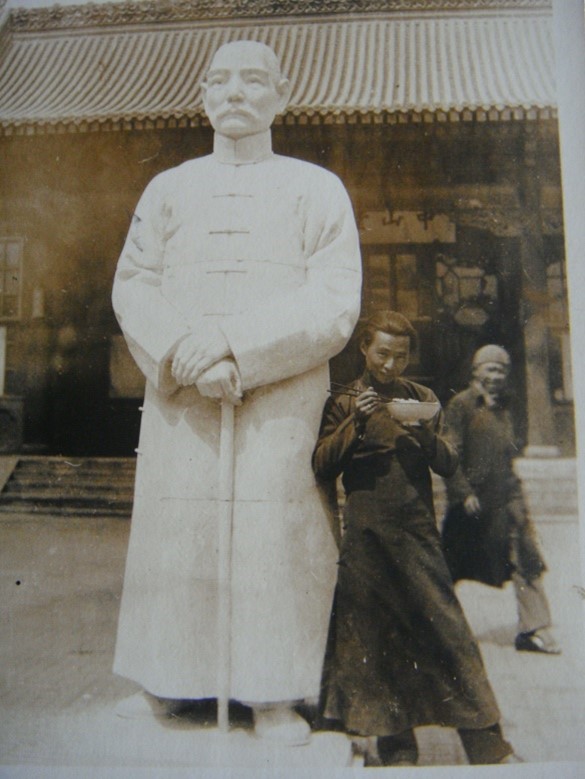2. STUDIES AND TEACHING IN CHINA – 1920 TO 1935
1. Apprenticeship in China
It was his mother who discovered creative abilities in her son and in 1920, at the age of 13, he began his apprenticeship in the studio of Zhu Zichang (1874-1934), the most renowned woodcarving master of the Wenzhou School during the Qing Dynasty.
He worked mainly on boxwood that has been used for a long time, as boxwood carvings appeared more than 900 years ago. Appreciated by the artists for its pliability and resistance to splitting, its softness to the touch, elegance and the delicacy of its grain, it was considered the most precious wood for carving. Some sculptors first made a clay model, but Zhu taught his apprentices to practice direct carving. It was in this cradle of woodcarving in Zhejiang Province that Yan took his first steps as an artist in the purest Chinese tradition, with works mostly representing Buddhist, occasionally profane figures.
Gifted and hardworking, he also had a curious mind and a taste for discovery. Several Chinese artists returning from Europe had founded art academies and Western art began to spread. After finishing his secondary education, Yan chose to enroll at SAFA – Shanghai Academy of Fine Arts. It was founded by Liu Haisu (1896-1994), based on the model of ENSBA – National School of Fine Arts in Paris.
2. Professional life
After graduating in 1930, he became one of the assistants of his sculpture teacher, Jiang Xiaojian (1894-1939) who was trained in France in the 1920s. In 1934, Yan was appointed wood carving teacher in SAFA, and became the only teacher of sculpture in this institution the following year.
That same year 1934, Yan Dehui went to Kumbum monastery in Gansu, now Qinghai, during the Lantern Festival, which celebrates the end of the Chinese New Year and documented the trip with photos.





